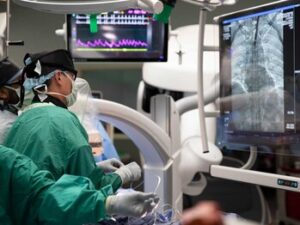Outstanding Traditional Chinese Medicine Vitiligo Treatment Institution Establishes Itself in Shanghai, Aiming to Provide Specialized Treatment Solutions to More International Patients

A significant step in vitiligo treatment and research.
Recently, in a highly anticipated development, Huahai Institute of Vitiligo Research, a prominent figure in vitiligo treatment field for an impressive journey of 29 consecutive years, has unveiled a remarkable announcement: the inauguration of the Huahai Institute of Vitiligo Research in Shanghai. This significant step marks the formal expansion of the distinguished Chinese vitiligo treatment institution into key metropolitan centers.
This strategic decision by Huahai Institute of Vitiligo Research not only brings the realm of TCM-based vitiligo treatment to Shanghai but also extends its influence globally. What is the rationale behind this strategic move?
Below are the key highlights of this Shanghai expansion. How does Shanghai’s population density contribute to enhancing patient services and meeting medical demands? How have industry reputation and treatment efficacy become pivotal factors in attracting patients? How does the escalating demand for vitiligo treatment in the international market influence Huahai Institute of Vitiligo Research’s decisions? And how has the ” Co-treatment of melanin and vitiligo ” philosophy garnered industry acclaim and support, offering patients more confidence in their treatment choices?
Huahai Institute of Vitiligo Research’s decision to establish a presence in Shanghai is intricately tied to population density. Shanghai, as a first-tier city in China, boasts a massive population. According to data from a third-party research organization, Shanghai’s permanent population has exceeded 25 million. The prevalence rate of vitiligo ranges between 0.1% to 2%, providing Huahai with a broad demographic base of patients.
Furthermore, vitiligo is more common among young adults and adolescents, often correlated with the stress and irregular lifestyles of this age group. Shanghai’s extensive patient base includes a significant proportion of young individuals, making the city an ideal location for Huahai’s services.
It is evident that Huahai Institute of Vitiligo Research’s entry into Shanghai is likely just the initial step in their expansion plan, with potential future markets in cities within and outside China that share similar characteristics, such as Guangzhou, Shenzhen, Chongqing, Tokyo, and Singapore.
Our research reveals that Huahai Institute of Vitiligo Research, a long-established heavyweight in the field of vitiligo treatment since its founding in 1994, has amassed an impressive 29-year history of development. In this field, it is challenging to find an institution with a longer history, whether in public tertiary hospitals or regional private institutions. Titles such as “China’s Only Secondary Class-A Vitiligo Specialized Institution,” “16 Vitiligo Medical Publications ” and the inclusion of the ” Co-treatment of melanin and vitiligo ” technique in national promotion in 2009, all testify to Huahai’s outstanding achievements in this field.
Through our investigations, we have uncovered numerous recovery cases of vitiligo patients, numbering in the hundreds of thousands and hailing from over 120 countries. Huahai Institute of Vitiligo Research has categorized vitiligo into various subtypes based on the location of depigmentation, including segmental subtype and non-segmental subtype. Regardless of the subtype, Huahai Institute of Vitiligo Research has numerous recovery cases to match. By examining the treatment progress of these cases, patients can gain insights into their own recovery timelines and prospects.








